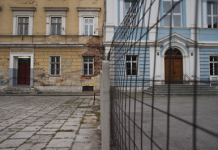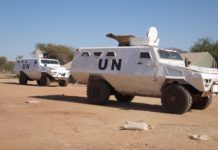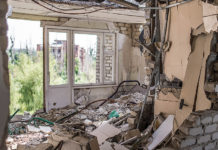Too close for comfort…
Contemporary non-governmental humanitarian action has emerged since 1967 when the war in Biafra took place. These NGOs, born at the end of the “Trente Glorieuses” (the thirty years following the Second World War, now seen as a period of great economic and social progress), built up their relationship with the media as a completely separate strategy, complementary to concrete work with populations in the field.
This relationship between humanitarian organizations and the media, sometimes described as « a mutual addiction » was considered by French medical corps involved with the Red Cross in Biafra as a desire to break “the law of silence” on observed facts, and even on the warring parties’ responsibilities. Already at that time such synergy was not lacking in ambiguity and the consequential “media hype” played widely into the hands of the secret foreign policy led by the French government through its support to Biafra secessionist rebels. Besides, the tragedy to which the population of this Nigerian province was confronted was the result of a double hegemony, with both a mainly Western humanitarian mobilization and information being processed by the international media largely controlled by the Western world.
After 40 years of existence and activities of this humanitarian generation ‘without borders’, the movement has come to terms with reality and has called into question some of its founding principles, in particular the features and positions resulting from the initial Western-centrism of international NGOs.
Nowadays, the non governmental humanitarian movement is, in fact, still widely dominated by Western protagonists and funding. However, this situation no longer corresponds to the changes which have come about with the 40 year existence of the recent dynamics of international solidarity. We are witnessing a re-balancing process at a global level towards a multi-polar system. The international superpowers are no longer, or not exclusively, those in place at the end of the sixties.
The conflicts that accompanied the decolonization processes on the various continents have partly contributed to this, alongside a considerable upsurge in demands for recognition of national or ethnic identity. The era of Western supremacy in military, economic, political and scientific fields is over. The initial parameters equation of modern humanitarian action has changed. From now on, the international public opinion ‘that matters’ goes largely beyond Western powers’ territory, and it is no longer exclusively fueled by the Western media.
Not only was 1967 the year of the Biafra war, but also that of the Six-Day war. Here again the domination of international media production had a major impact. Assessing that information was being confiscated by the West led the Arab countries to become aware of the issues at stake. Consequently they sought to develop complementary strategies in the perspective of offering alternative information. The Arab League then committed itself to creating an Arab press agency.
Technically, getting a foothold in the field of spatial telecommunications became an essential complementary objective. 9 years were necessary for the setting up of the Arabsat programme and 18 years for its first satellite to orbit the Earth. And though this project did not emerge without dissension and clashes, the monopoly had been broken.
A few years later, in 1997 at the initiative of the United Arab Emirates the telecommunications programme « Thuraya » was born, now widely-known by humanitarian actors working in remote areas. The aforementioned process was to lead to the creation of Al-Jazeera in 1996 and to its first broadcasting in English by 2006. Internet coverage in Arab countries is speeding up and it was estimated in 2008 to benefit 17% of the population. It varies from 58% of inhabitants connected to internet in the Emirates to 4.8% in Yemen.
The emergence of these new media networks has had two simultaneous effects: the Arab public opinion is no longer kept apart from the main foreign policy issues and the «Western public opinion is no longer fed only with the Western media on world affairs. This has made Régis Debray state: We are all one-eyed in the Kingdom of image. In the far away slaughter there is now the corpse that is good for the camera and the collateral damage that is good for statistics. CNN provides the close-up picture; Al Jazeera the overall picture. «Never believe what you see». For those who intend to follow Eluard’s good advice, going back and forth from one channel to the other is recommended. »
The Israeli offensive in the Gaza strip in January 2009 was the opportunity for a new illustration of this break in the news monopoly, with Al Jazeera, for the first time, providing international Media with footage shot by its news teams who were the only ones present on the Palestine territory. In 2001 the satellite television network Qatarie had already been the first to provide footage on the conflict being fought in Kabul, effectively making a rightful entry onto the world media scene.
For this generation of humanitarian organisations one of whose core values has been its relationship with the Media, the growing awareness of these changes has had a certain impact. The special relationship with the media aims at informing and questioning public opinion, the idea being to have a decisive political influence and to speed up the crisis resolution process in a long lasting way. And there is consequently no reason for Western public opinion to be alone in such a process. Western countries no longer entirely control or regulate worldwide international affairs.
Humanitarian organisations have made widespread use of the “compassional protocol”, playing on the sympathy an emotions of their countries’ population. Similarly, it is the same mechanism which is used today by non-Western mass media. Thus, some of the events that they cover bring together public opinion from different geographical areas in a spirit of extreme and instinctive solidarity. Partnerships can be built up around identity issues (around a sense of belonging to a community) or religious issues. In Muslim countries in particular, this is indeed what happens.
We can find concrete examples of this process in the Palestine territories issue, or during the international protest against the caricatures of the prophet Mahomet in the Danish media. During this event, the European media did not really underline how those events were echoed by a powerful xenophobic movement in Denmark, and they merely highlighted that there had been an attack on freedom of speech.
In the countries where humanitarian intervention is carried out, NGOs still have to develop a whole culture to inform local populations. Learn to say who they are and what they do. Why they do it. What each one’s networks and alliances are and where the funds come from. What the relationships between each NGO and the government of its own country are or are not. NGOs need to acquire the necessary know-how and be clear about their priorities with regard to this.
In regions facing complex crises such as Afghanistan, Darfur after the IPC had charged Omar El Bechir and Tchad since the sad Arche de Zoé case, this effort at communication may end up contradicting local political authorities. Very often, the main national press reproduces the local authorities’ viewpoint in a biased manner.
Strategies aiming at reinforcing the link between those who are currently involved in the media, leads to Humanitarian Organizations’ necessary desire to take into consideration “Others’” opinion. And if the Humanitarian movement doesn’t take these changes into account through realism and fundamental belief, it will be forced to do so because of the growing insecurity that threatens teams in the field. There has indeed been an increase in violence towards humanitarian organizations, with local staff being particularly affected (they are the victims of 8 deliberately provoked deaths out of 10).
This is part of an overall development in the perception of the local population, and local political and military authorities towards those involved in the international solidarity. This suspicion responds to multiple and intricate mechanisms and ends up with a loss of the natural immunity of humanitarian workers who have gone from benefiting from the kindness of the population to suffering from suspicion and sometimes even violence. Although communication and information technologies can’t be considered as the only ways of tackling and preventing security risks, they currently remain crucial and unavoidable means for NGO leaders.
Humanitarian associations are readily described as reactive and adaptable. Their angled standpoints should lead them to take these trends into account. Humanitarian organisations and the Media wish to have a decisive influence on international policy. Both will gain by moving away from their initial ethnocentrism and opening up to a new era of knowledge and power.
The Western media monopoly has been and gone. Likewise, the almost exclusive Western nature of international NGOs should no longer be a satisfactory situation. Therefore, a dual transformation is necessary. A true cultural revolution to which the humanitarian movement will or will not possess the adaptive intelligence to commit itself.
Translation by Mrs Anna Jeannesson and the students from the Graduate Programme M2 Organisation Internationale OIG ONG / Institut d’Etudes Politiques de Grenoble (France)
Pierre Micheletti
ancien président de Médecins du Monde
Derniers articles parPierre Micheletti (voir tous)
- Les ONG occidentales sont-elles conduites à la paralysie opérationnelle ? – 30 avril 2014
- Prises d’otages : le changement de doctrine du gouvernement complexifie la position des ONG humanitaires françaises – 5 mai 2013
- Colloque les 19 et 20 octobre 2012 : L’humanitaire à l’épreuve des cultures – 9 juin 2012







